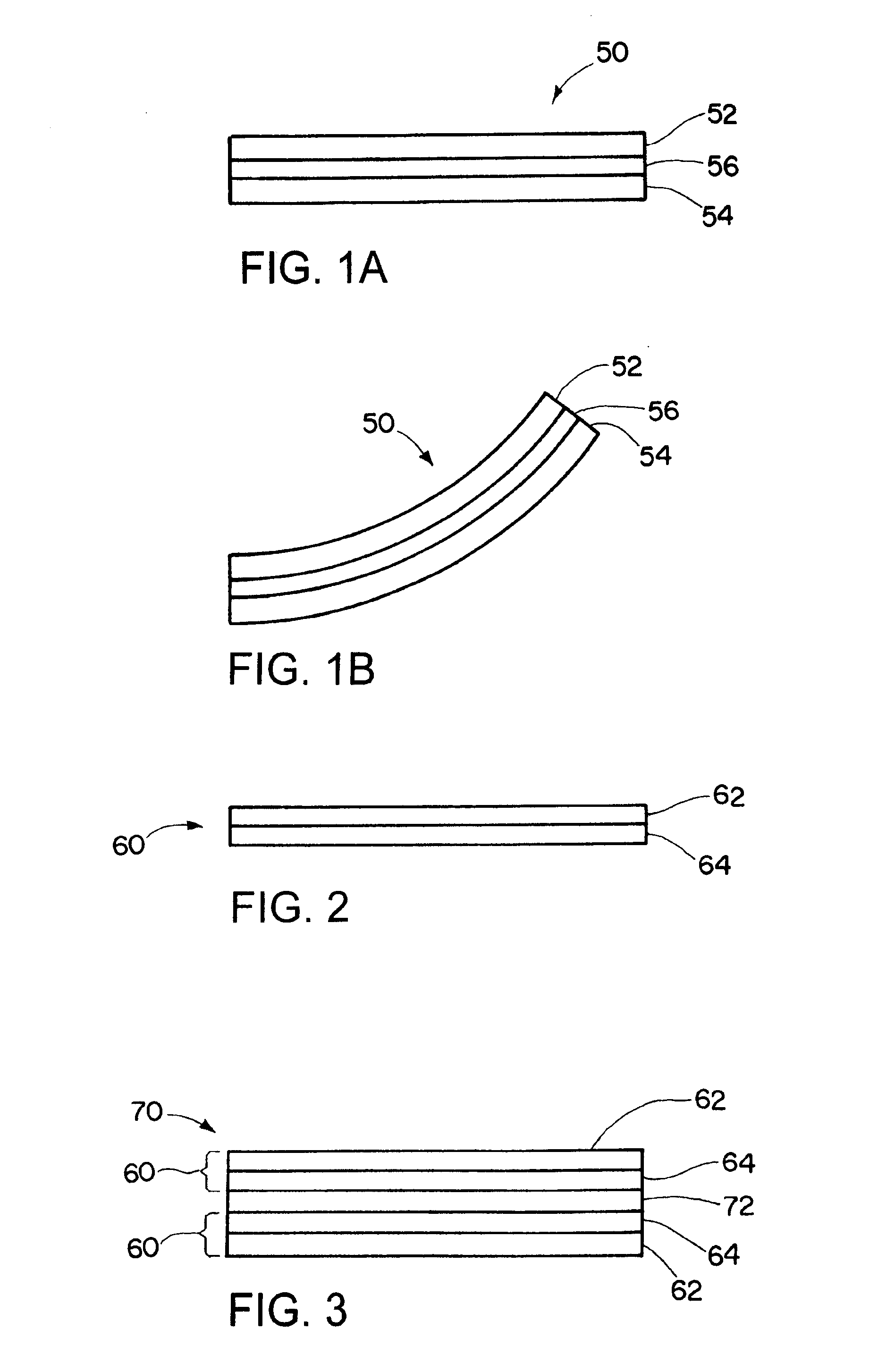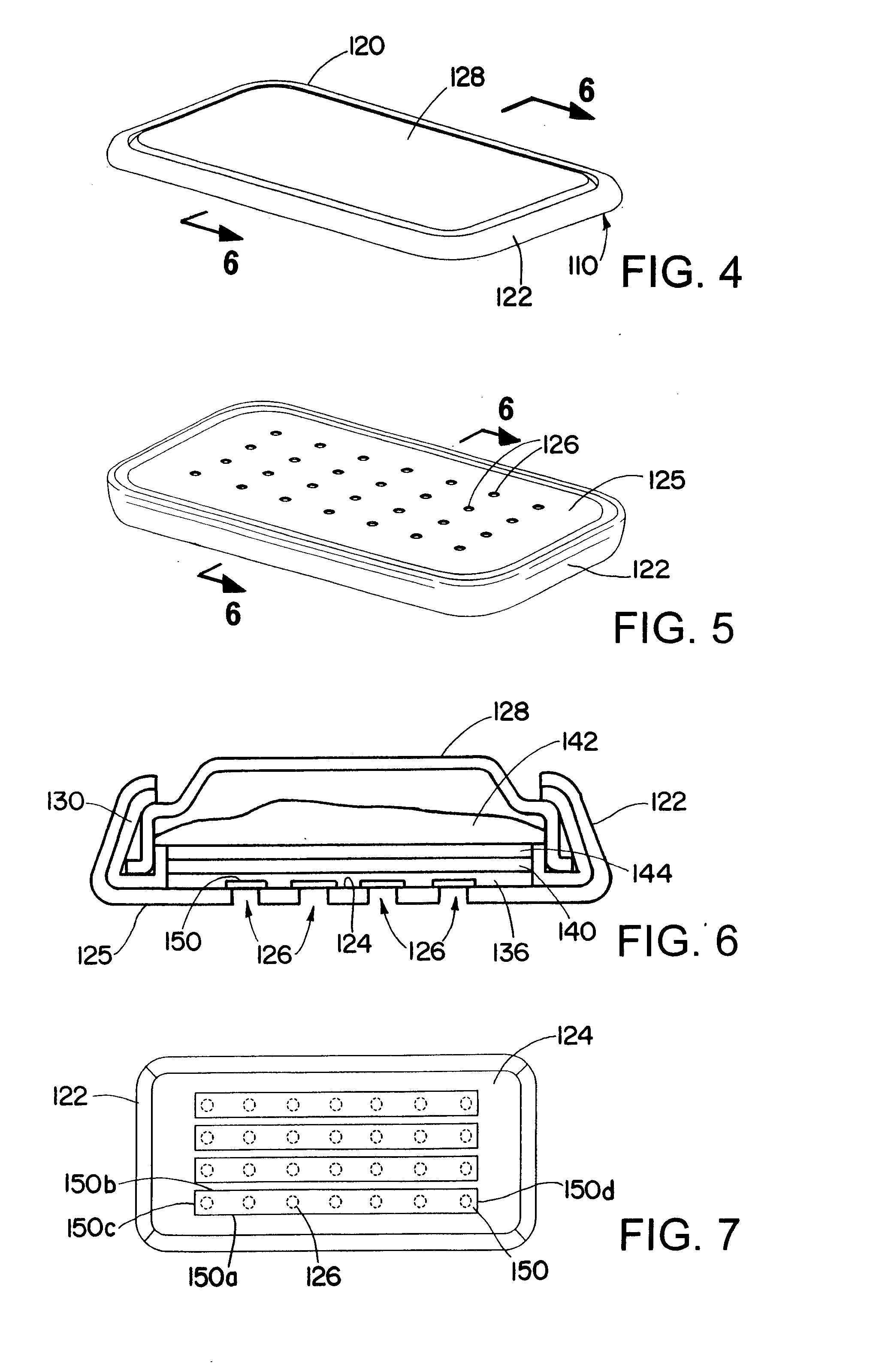Battery including a fluid manager
a fluid manager and battery technology, applied in the field of fluid regulating systems, can solve the problems of limited maximum discharge rate, reduced material content, and reduced material content of oxygen reduction electrodes
- Summary
- Abstract
- Description
- Claims
- Application Information
AI Technical Summary
Benefits of technology
Problems solved by technology
Method used
Image
Examples
example 1
Bending / Flap Actuator
[0143]A bending / flap actuator was prepared by as follows. A trilayer was prepared by evaporating 70 nm of platinum onto opposing surfaces of a 110 μm PVDF Millipore separator. A 30 μm layer of polypyrrole was then deposited over each platinum layer. The polypyrrole layer was a polypyrrole film doped with hexafluorophosphate (PF6−) ions. The polypyrrole film was deposited onto the platinum surfaces using a solution comprising 0.06M distilled pyrrole, 0.05M tetrabutylammonium hexafluorophosphate and 1% water by volume in polycarbonate. Deposition was performed galvanostatically at 0.125 mA / cm2 for a time sufficient to produce a 30 μm layer.
[0144]The actuator was actuated in an aqueous solution of sodium hexafluorophosphate (NaPF6). The voltage was stepped between 1.4 V and −1.4 V. The actuator exhibited a bending or flapping motion in response to the voltage.
[0145]Actuators in accordance with this example were also tested for their operation as a valve. Actuator s...
example 2
Encapsulated Bending / Flap Actuators
[0146]Two actuator strips were prepared as described in Example 1. The actuators were dried in air for two weeks. The ends of the actuator were compressed between two glass slides and then sprayed on both sides with a coating material. One actuator was sprayed with a silicone coating, Silicone Conformal Coating 422A (MG Chemicals), and the other actuator was sprayed with an acrylic coating, Acryl Conformal Coating 422A (MG Chemicals), to create a 2-8 μm thick coating on the outer surface of the actuators. Aqueous NaPF6 was applied to the uncoated ends of the actuator and allowed to wick down the length of the actuator. The actuators were cycled from 1.4 to −1.4V. The silicone coated actuator was successfully actuated, while the acrylic coated actuator failed to actuate since the acrylic was too rigid and did not adhere well to the actuator. The silicone coated film dried out after three hours.
example 3
[0147]Linear actuator components were prepared as follows. Films were synthesized by depositing a solution of 0.05 M tetrabutylammonium hexafluorophosphate (Aldrich 98%), 0.06 M distilled polypyrrole (Aldrich), and 1% water in polycarbonate on a glassy carbon crucible. Before deposition, the glassy carbon was polished using a one micron diamond scrub followed by polishing with jewelers' rouge. The polypyrrole-PF6 material was deposited galvanostatically at 0.125 mA / cm2 for 8 hours to produce a film with a thickness of about 11.2 μm. The dimensions of the films were about 26 mm long×4 mm wide×11.2 μm thick.
[0148]The actuator films in this example were tested with a sliding valve mechanism, as illustrated in FIGS. 24A and 24B. In this case, a lever arm 810 was attached to one end of a first metal plate 820. The first metal plate 820 was positioned adjacent to a second plate 830. The lever arm 810 included a pivot point 812 located near an end 810a of the lever arm oppos...
PUM
 Login to View More
Login to View More Abstract
Description
Claims
Application Information
 Login to View More
Login to View More - R&D
- Intellectual Property
- Life Sciences
- Materials
- Tech Scout
- Unparalleled Data Quality
- Higher Quality Content
- 60% Fewer Hallucinations
Browse by: Latest US Patents, China's latest patents, Technical Efficacy Thesaurus, Application Domain, Technology Topic, Popular Technical Reports.
© 2025 PatSnap. All rights reserved.Legal|Privacy policy|Modern Slavery Act Transparency Statement|Sitemap|About US| Contact US: help@patsnap.com



